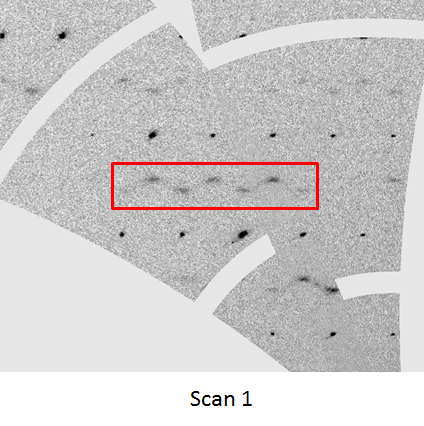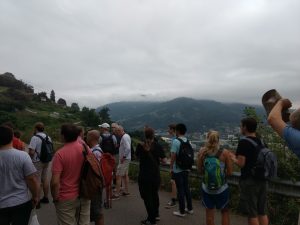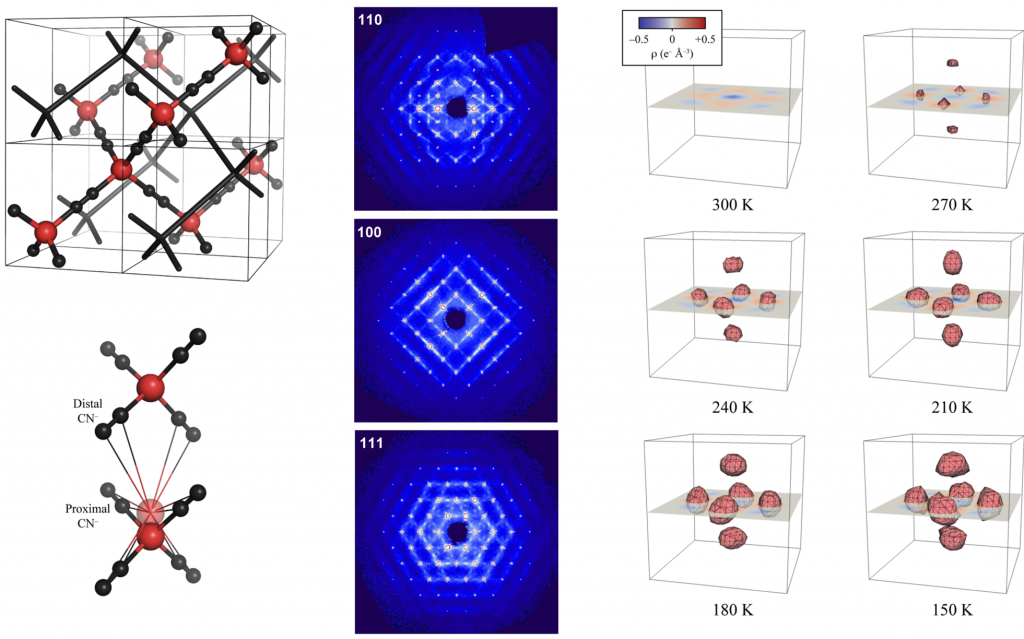Chemical Communications 2018, 54, 9849 – 9852 [doi:10.1039/C8CC05430D]
For the collidine analogues of Barluenga’s Reagent (IPy2BF4) reported, a flat cation is necessary for the generation of a modulated phase, in keeping with the “Ratchet Model” theory [Kim et al., Crystal Growth & Design, 2014, 14, 6294]. Attempts to study “diffuse modulation” in Br(Coll)2ClO4 have shown that these non-Bragg features disappear very rapidly on exposure to synchrotron radiation, an effect thought to be caused by the radiation damage disrupting the lattice vibrations that cause the modulation.
- Publisher’s copy:Â Royal Society of Chemistry
- Oxford University Research Archive (ORA)




 Kirsten’s research is focused on several areas that will establish a fundamental understanding of modulation in molecular materials e.g. their formation and properties. This knowledge can be put to immediate use in Crystal Engineering, and will also affect research in pharmaceuticals, developments in molecular modelling and crystal packing predictions.
Kirsten’s research is focused on several areas that will establish a fundamental understanding of modulation in molecular materials e.g. their formation and properties. This knowledge can be put to immediate use in Crystal Engineering, and will also affect research in pharmaceuticals, developments in molecular modelling and crystal packing predictions.